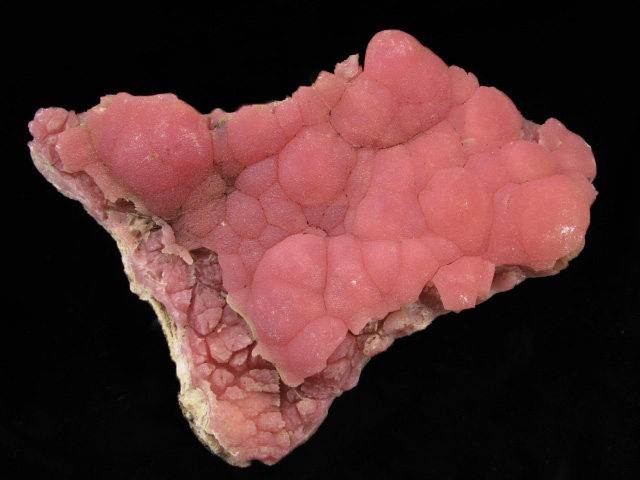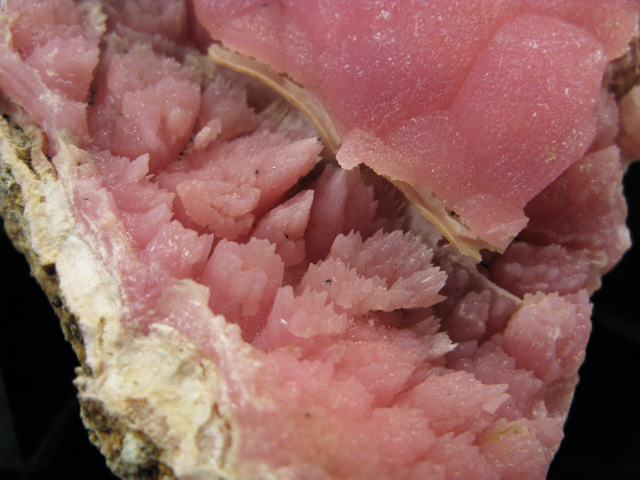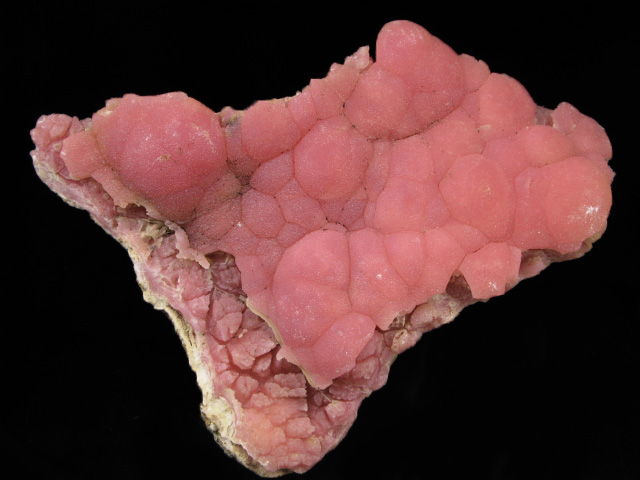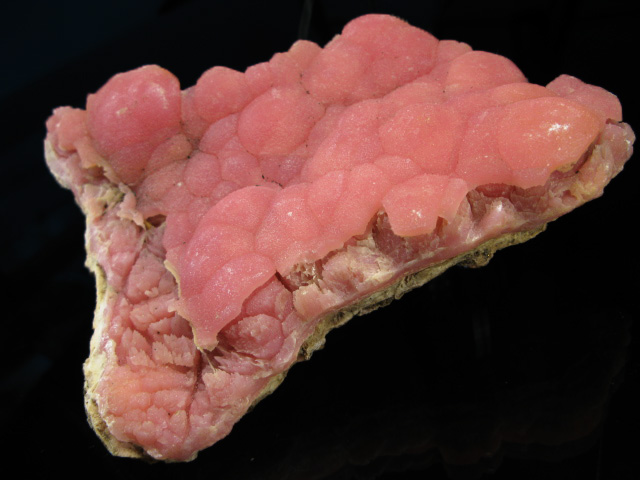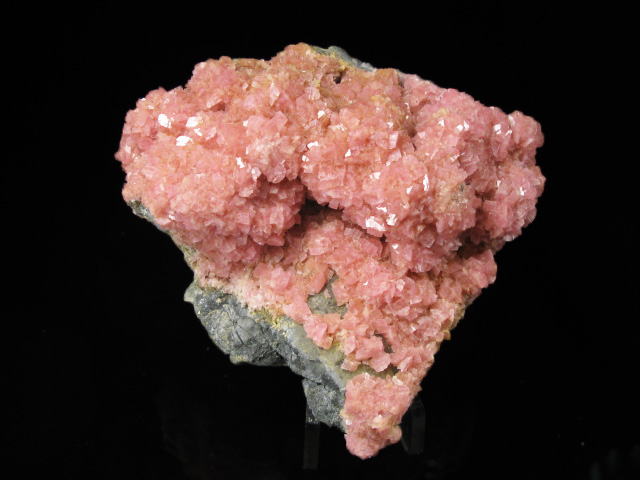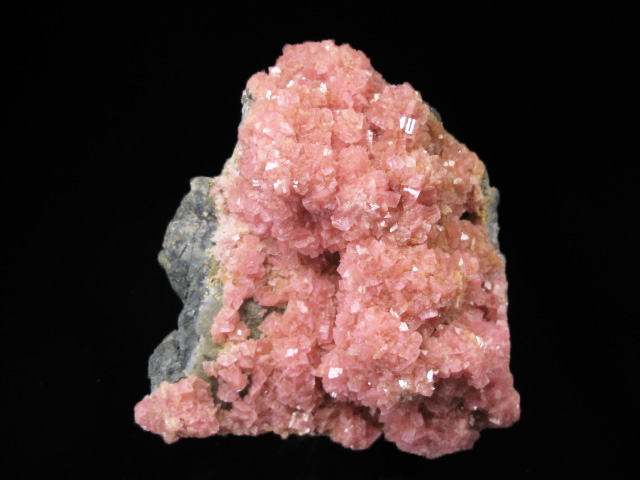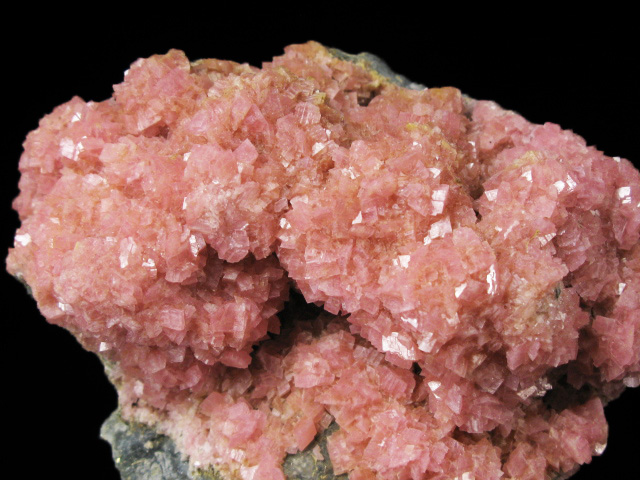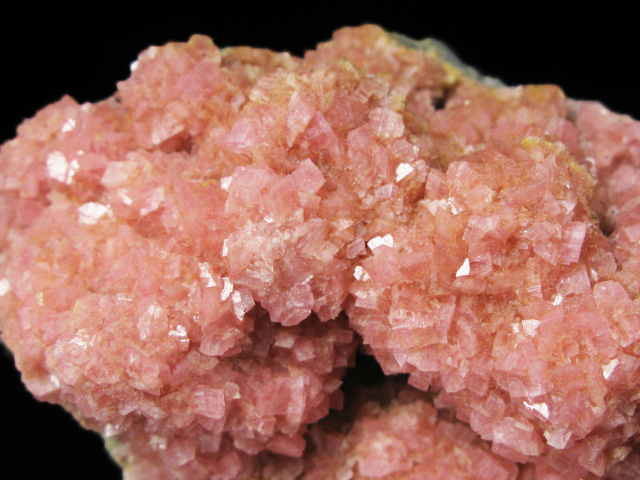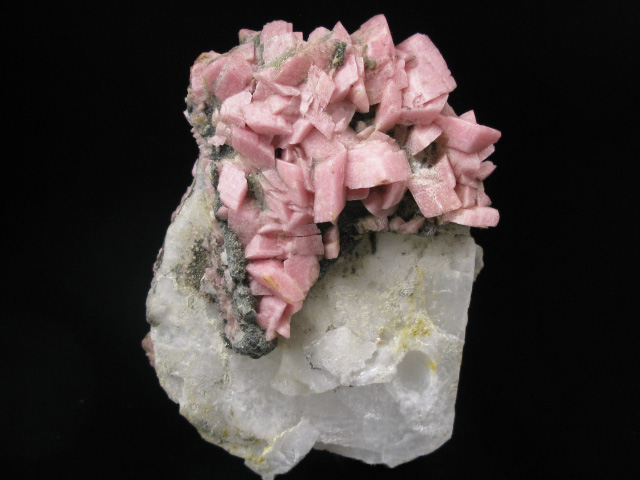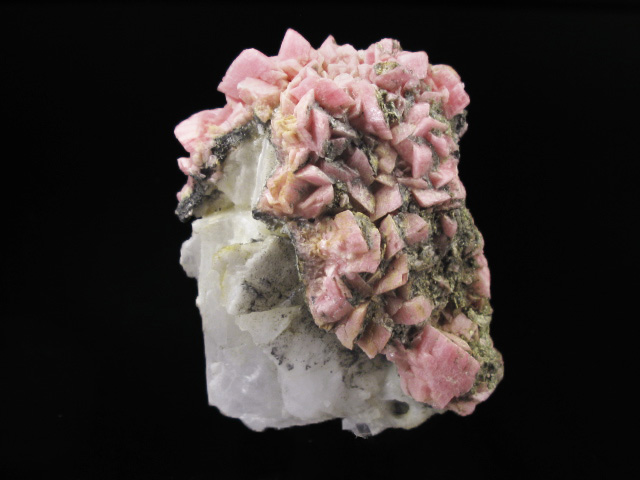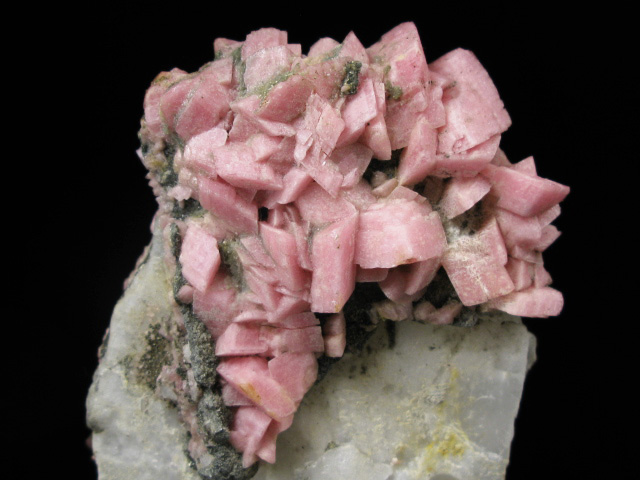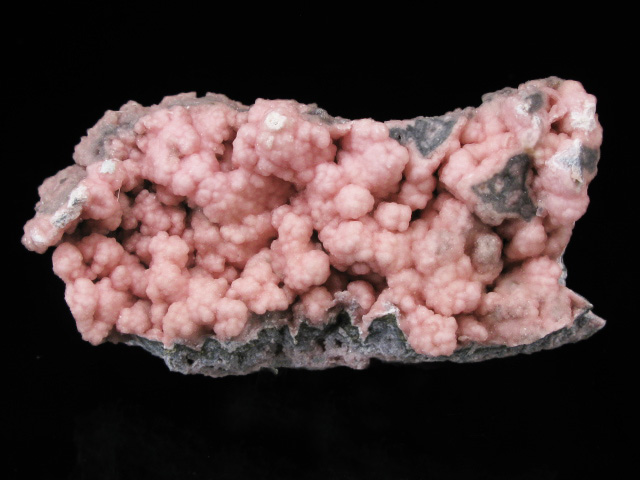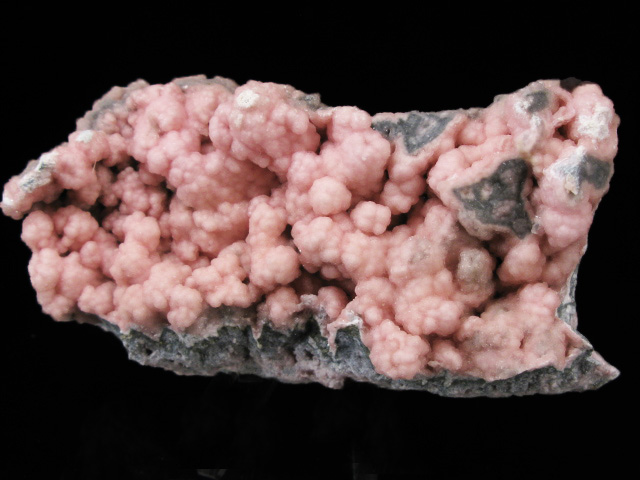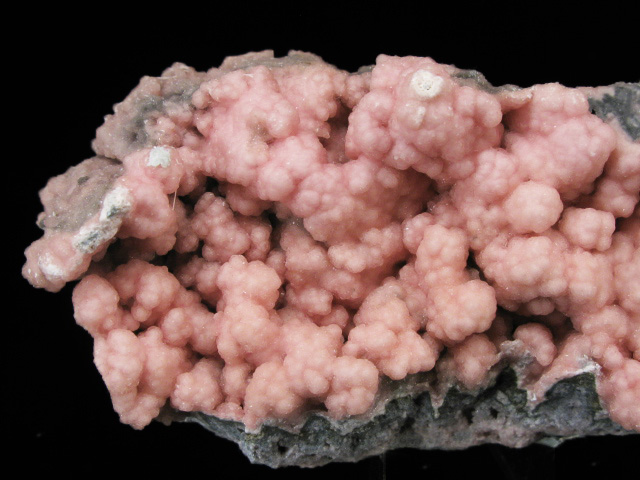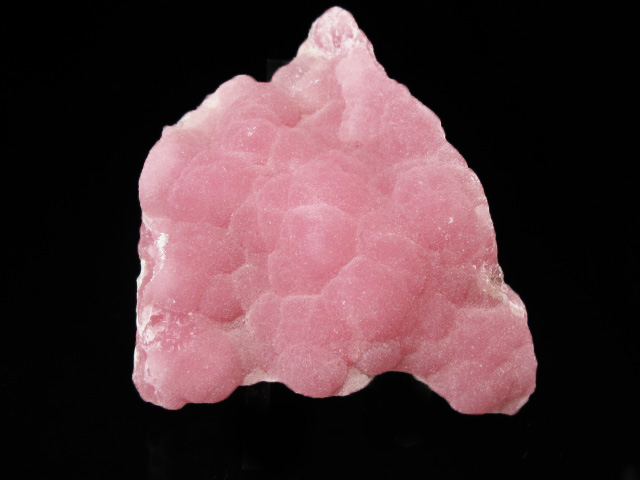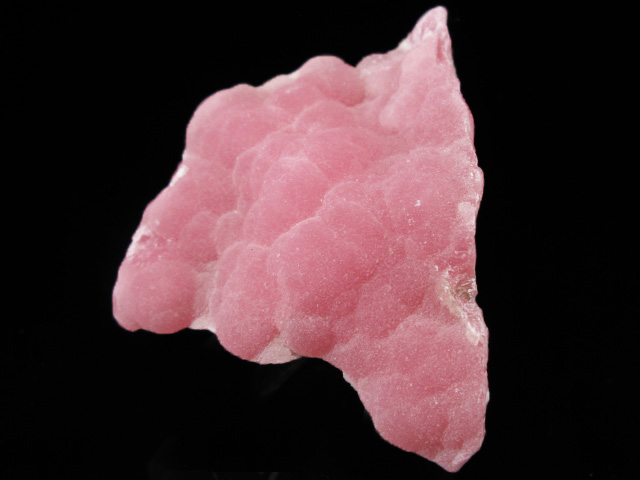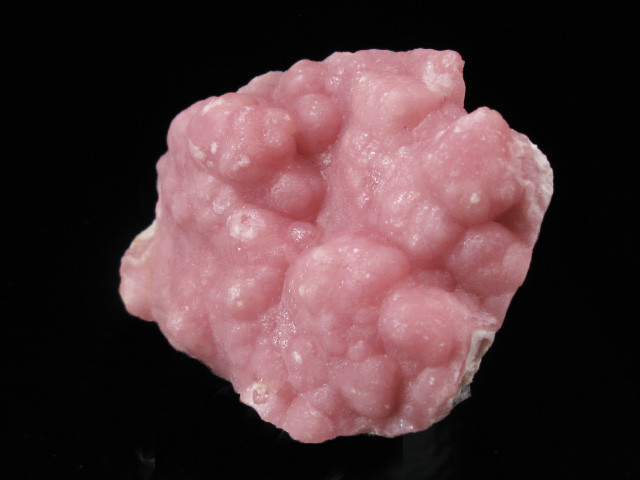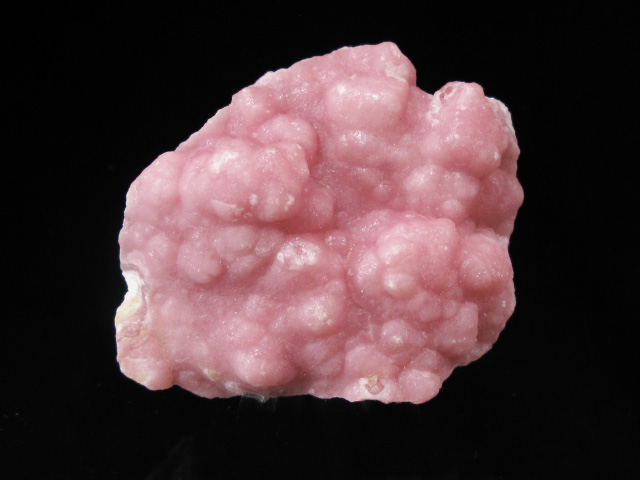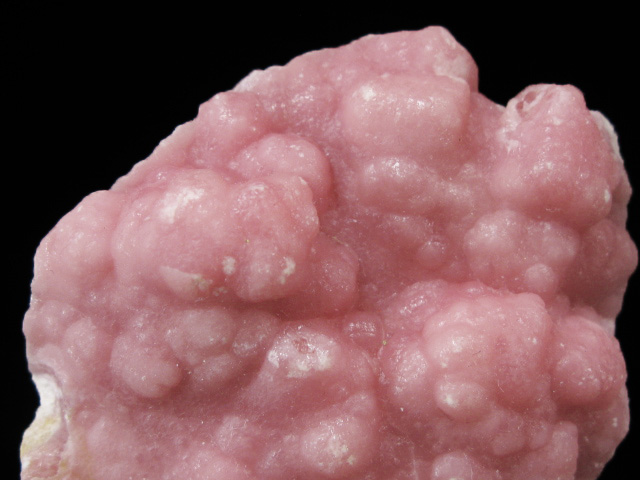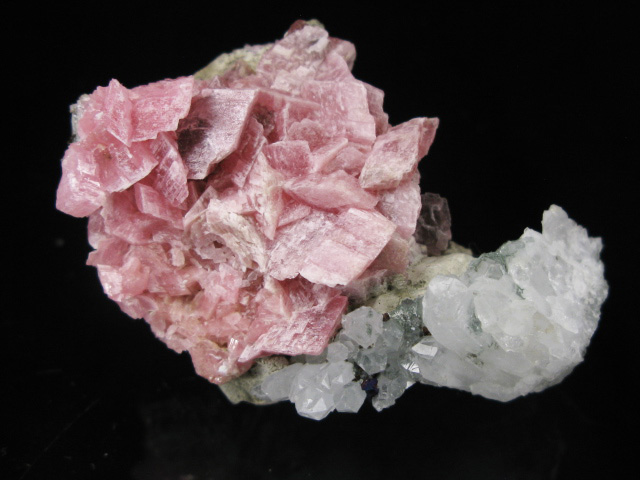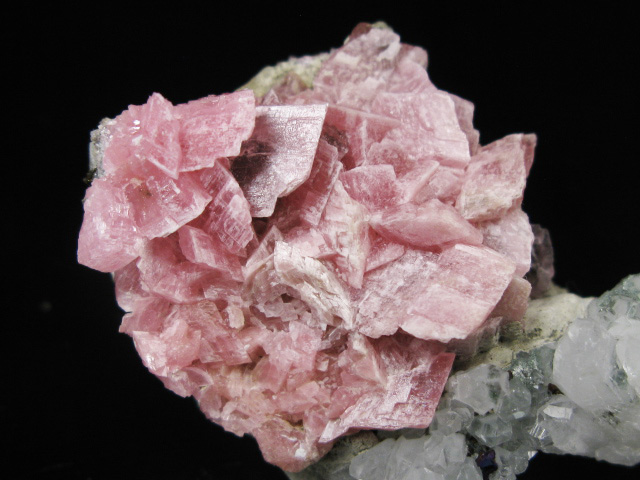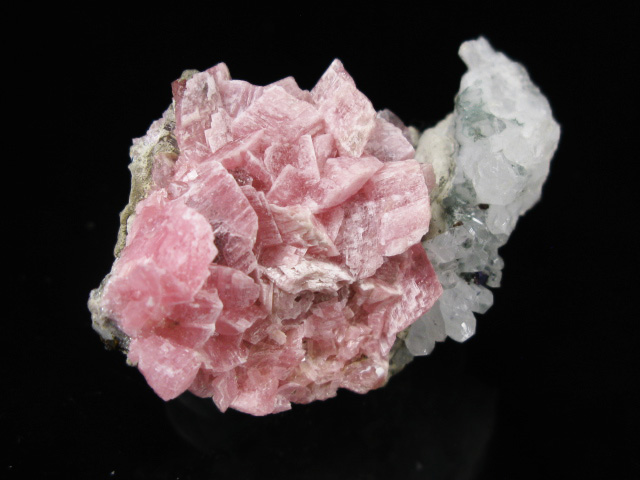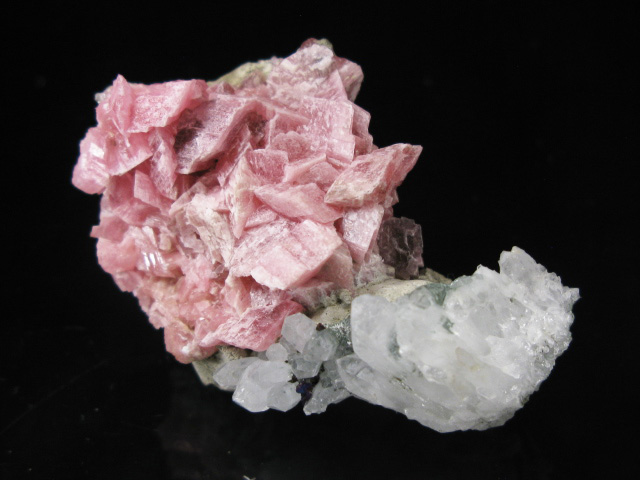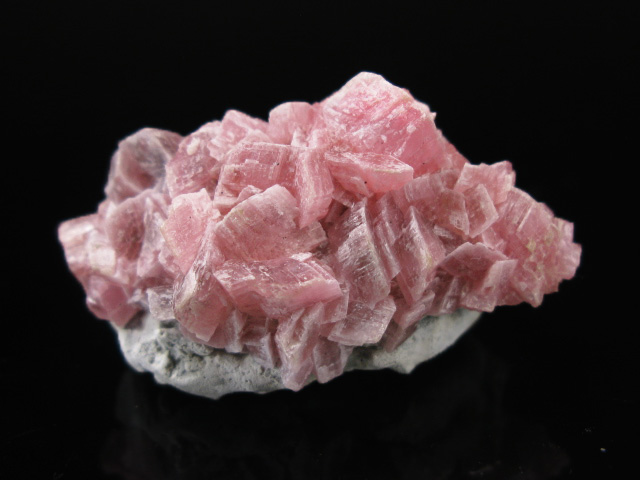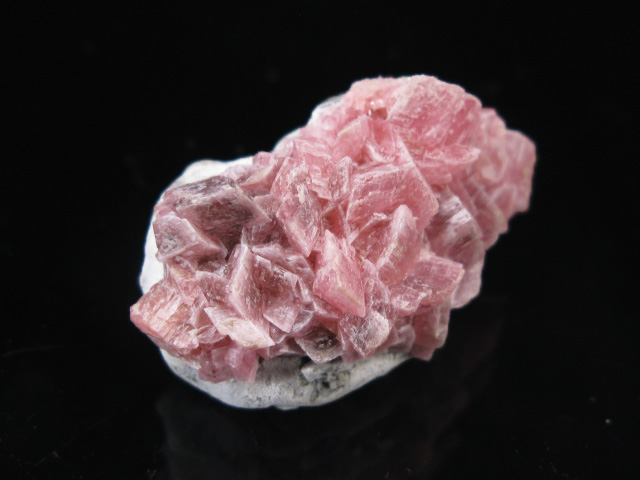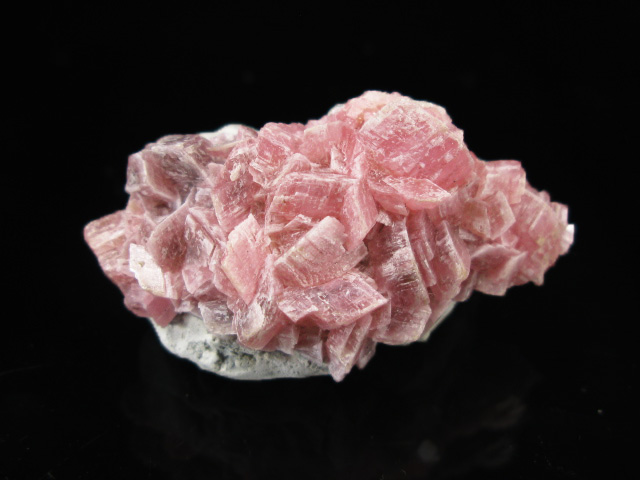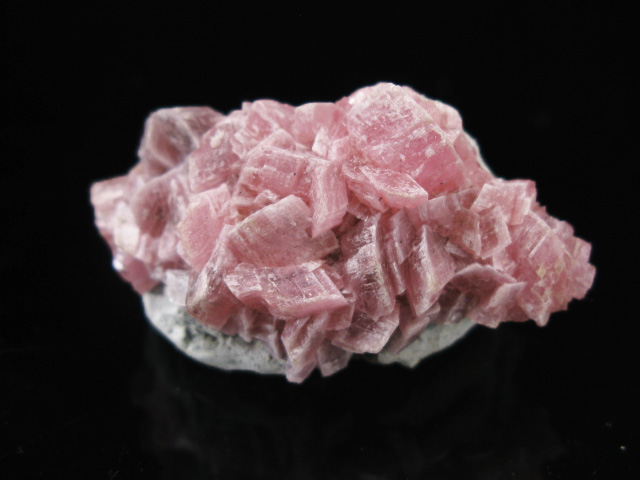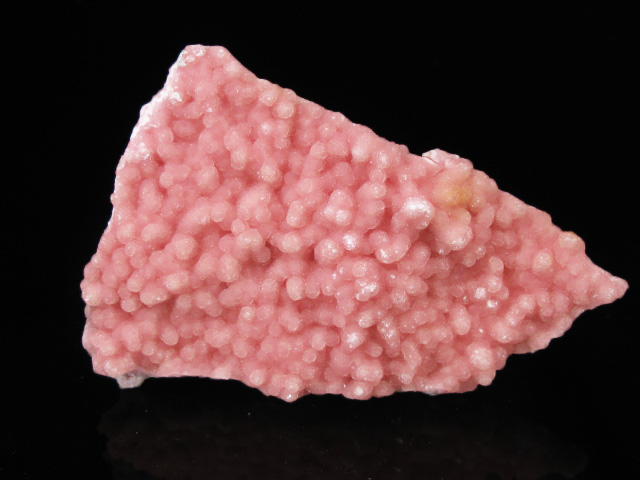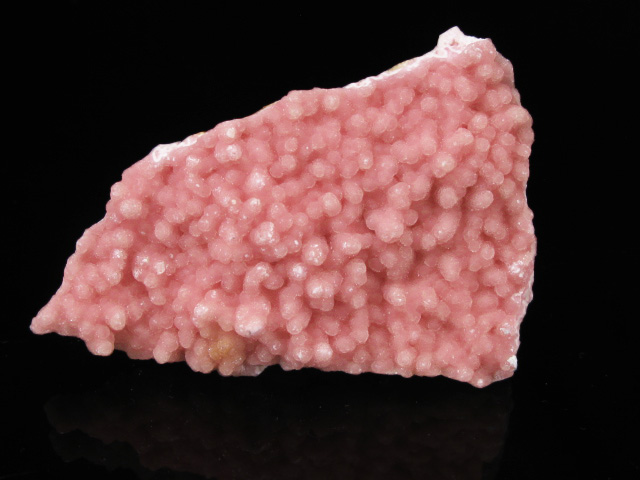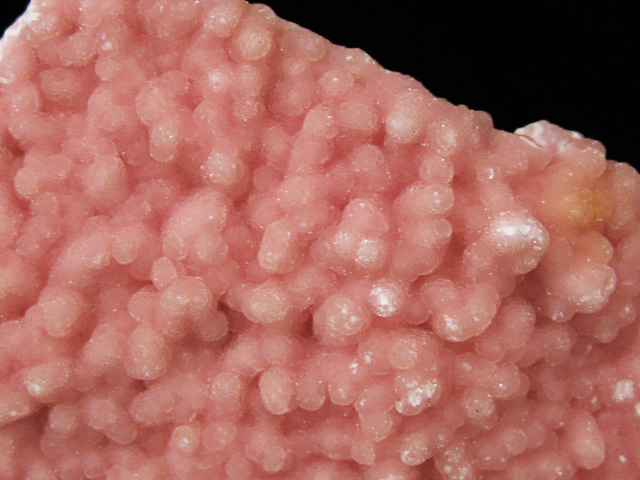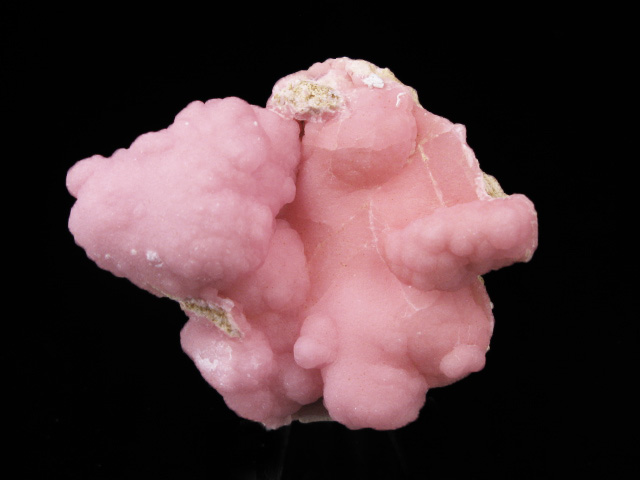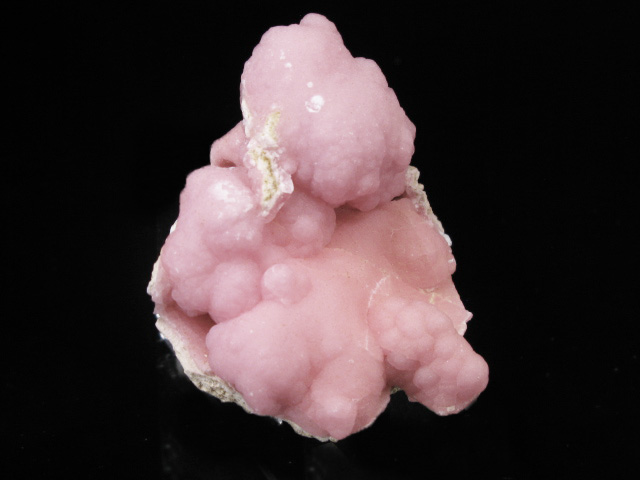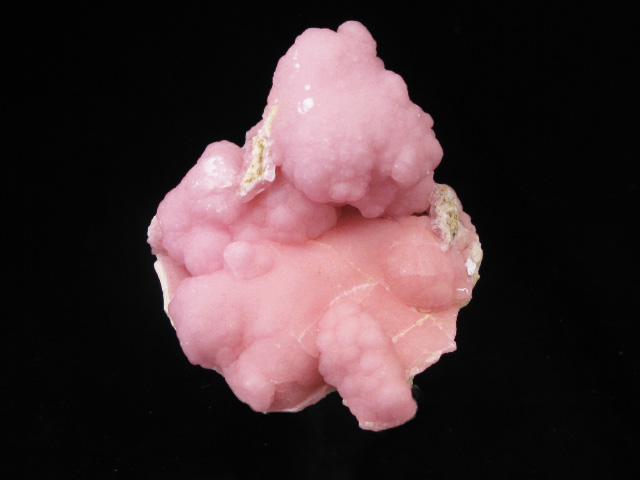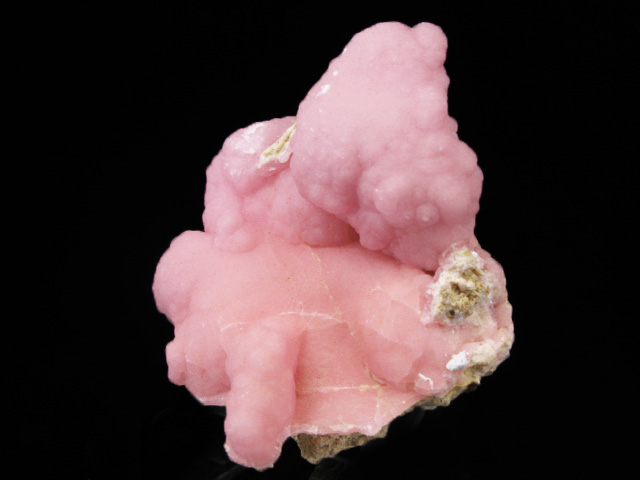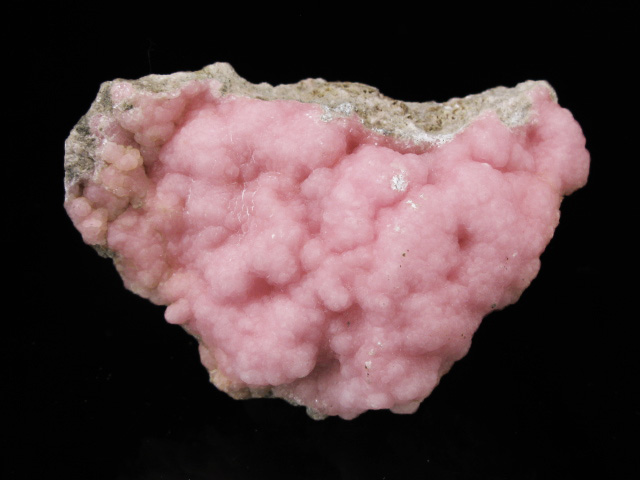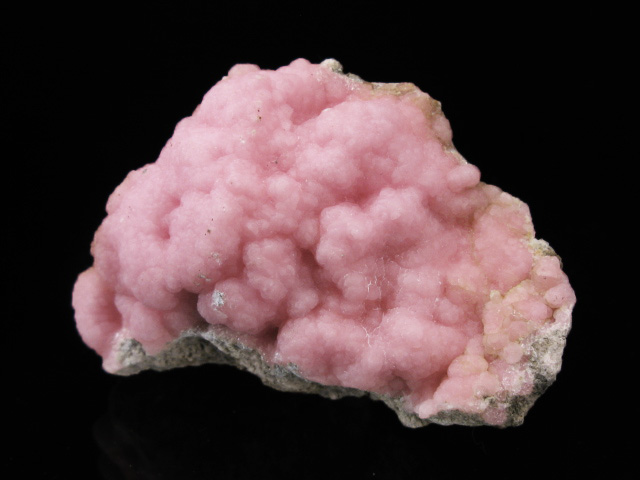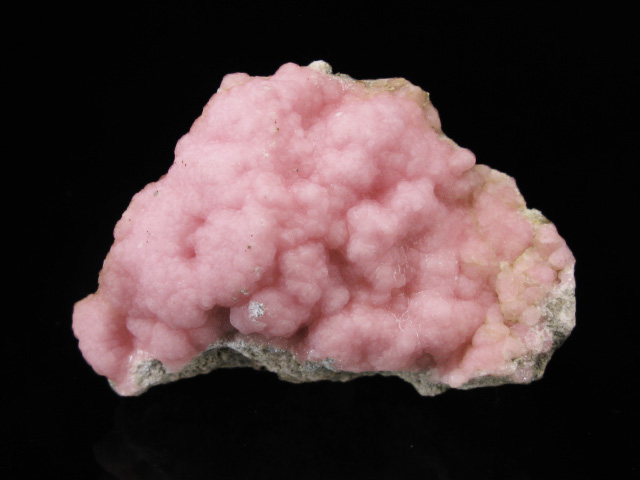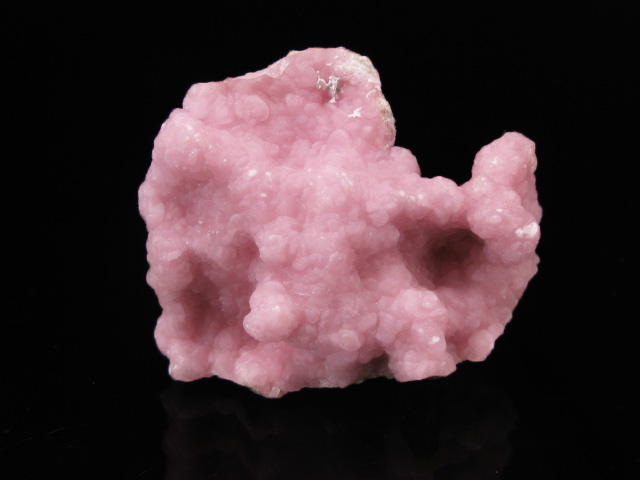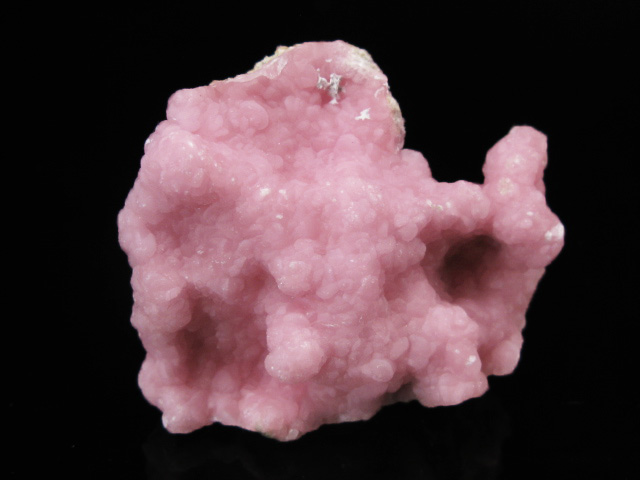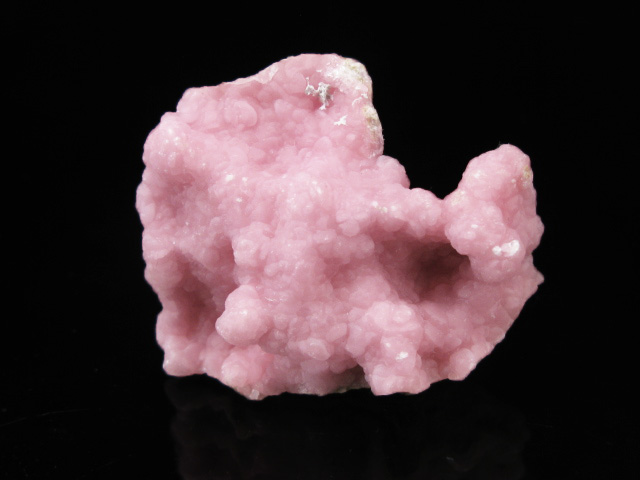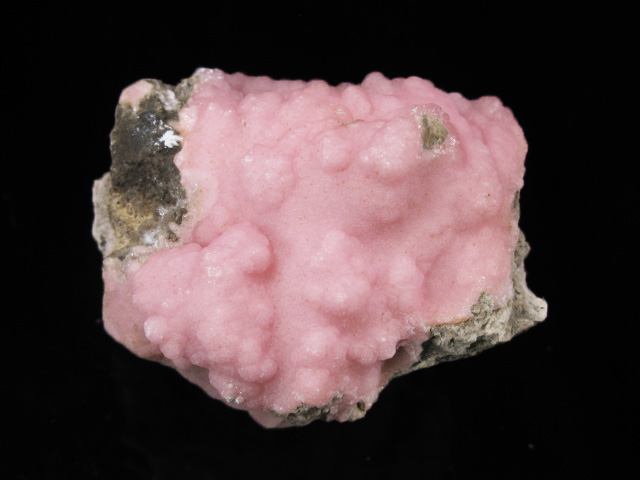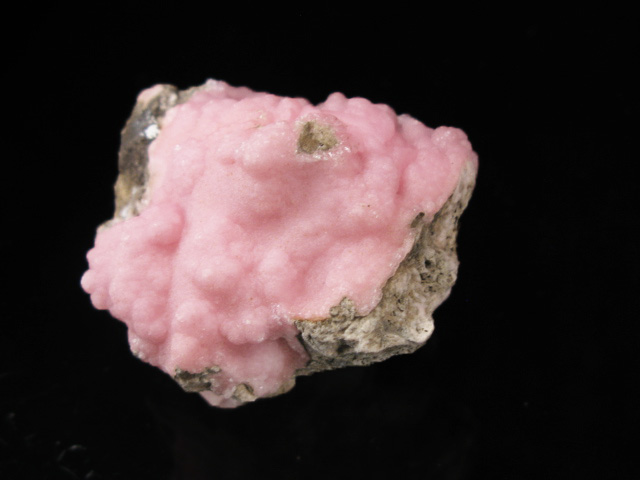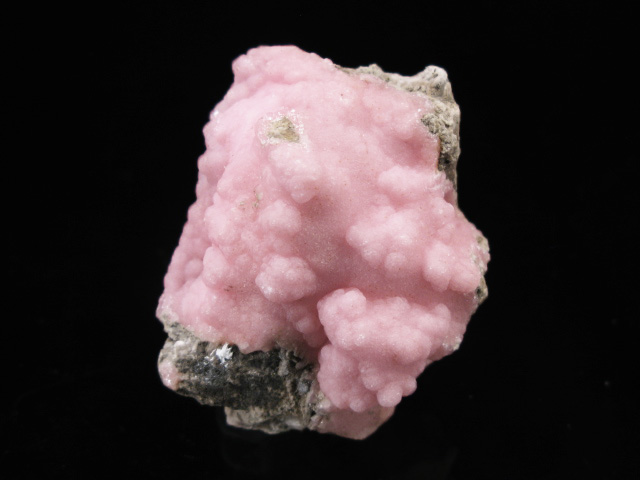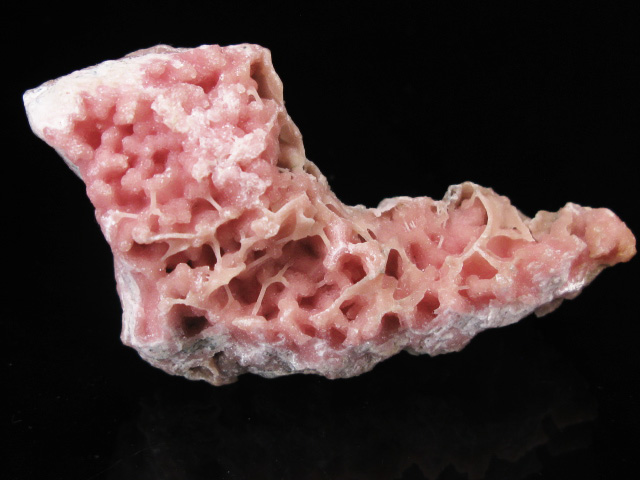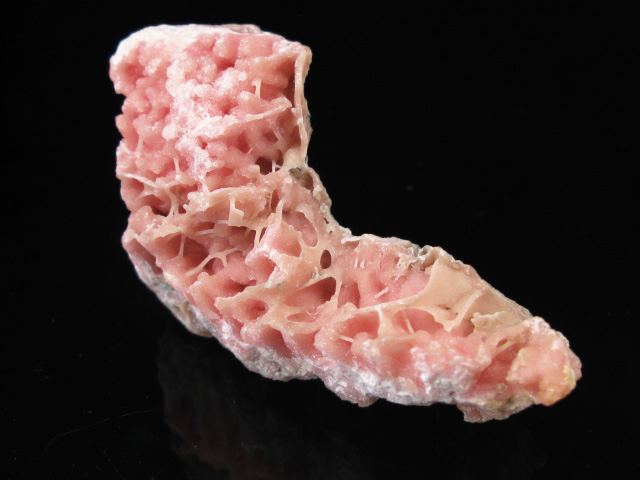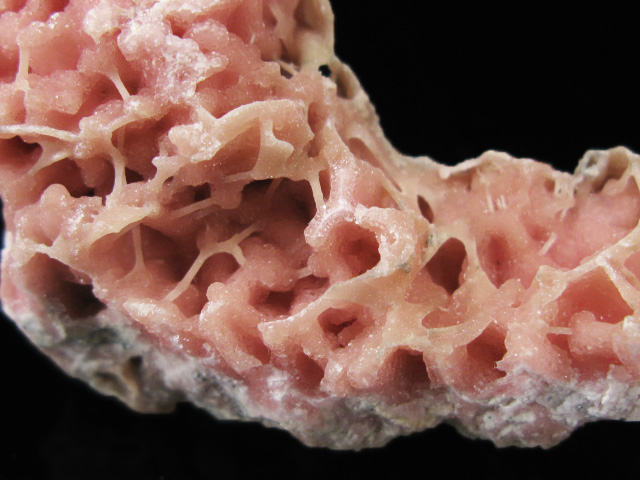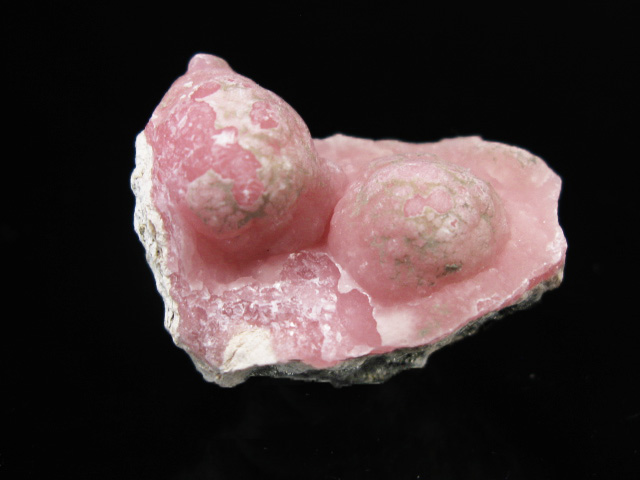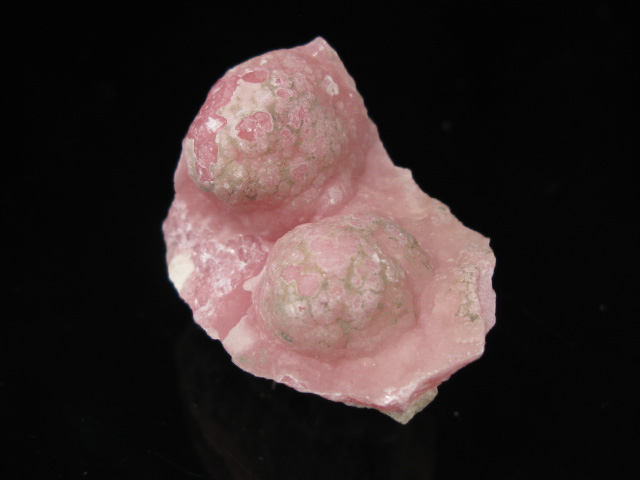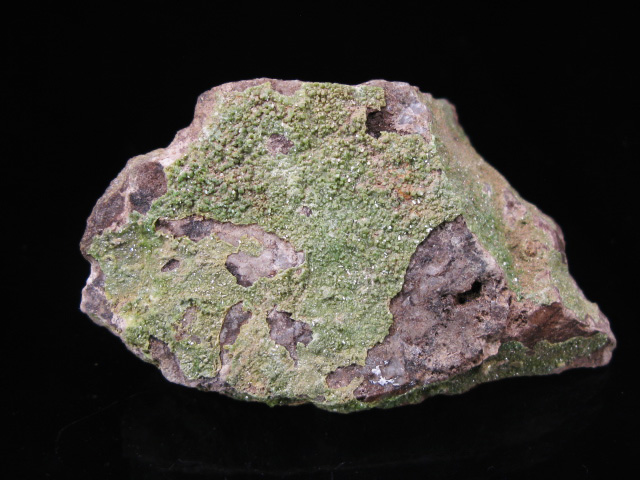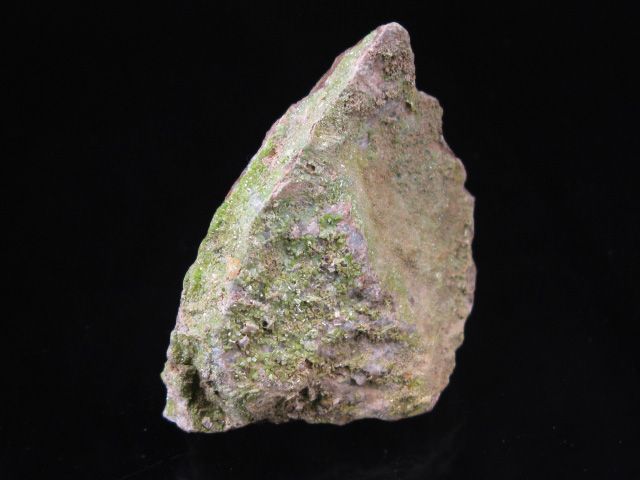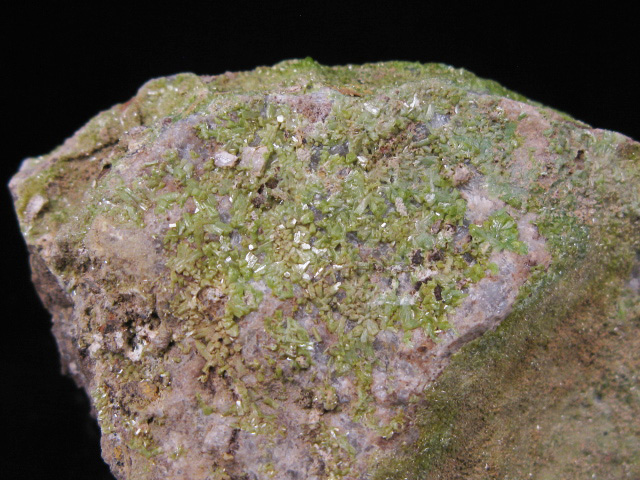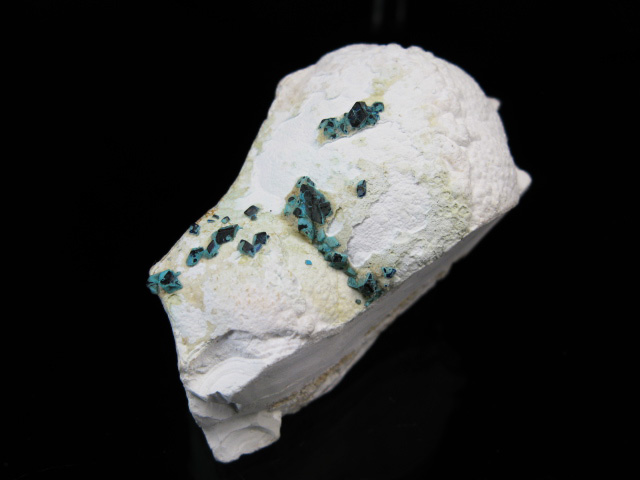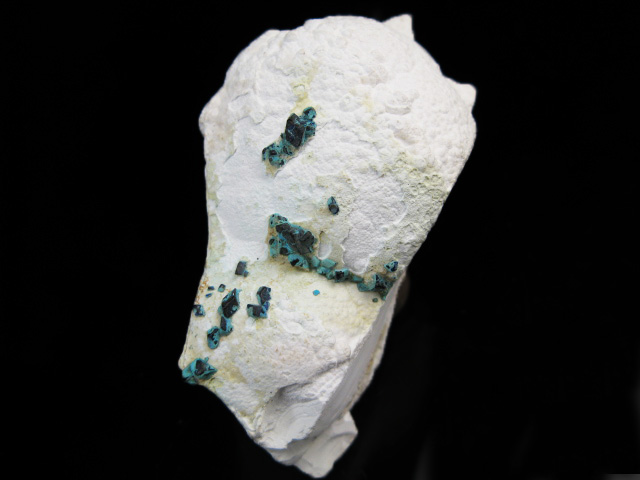Japanese Rhodochrosite!
A selection of old rhodochrosite specimens form Japan, and a couple others.
While most of the specimens in this update are the botryoidal material from Oppu, the examples from the Osarizawa Mine are of particular note. Pieces from this location are considerably rarer, and are notable for usually being crystalline. In fact, the mine was only operational from 1936 to 1965.
I have tried to depict these with the weakest color you are likely to see, but there will be a bit of variation with lighting-- they tend to look best under incandescent lighting.
JPR01 Rhodochrosite
Oppu mine, Nishimeya-mura, Naka-Tsugaru-gun, Aomori, Japan
15.4x 9.8x 2.2 cm
$2300
A spectacular cabinet sized example of rhodochrosite from Japan. This piece has particularly vibrant color, and interestingly combines a botryoidal habit with underlying crystals. Oppu rhodochrosite usually has a more pastel color (you can compare to the other offerings on this page)-- pieces like this have never been common
The Oppu mine was intermittently worked for various ore between the 1600's and closure 1979, with a final smaller scale operation undertaken int he 1980's to recover lapidary rhodochrosite.
JPR02 Rhodochrosite
Osarizawa mine, Kazuno City, Akita Prefecture, Japan
8.5x 7.8x 3.5 cm
$1600
A very rare cabinet sized example of *crystalized* rhodochrosite from Japan. To begin with, there has been almost no new Japanese rhodochrosite collected in approximately 35 years, so the material has never been particularly abundant-- but almost all of the rhodochrosite seen on the market comes from Oppu. The Oppu pieces and to be botryoidal, and almost never exhibit crystals. Pieces from Osarizawa are considerably rarer-- in fact, the mine was only operational from 1936 to 1965. Pieces from this locality are notable for usually being crystalline-- and this is a particularly rich example, with the display face entirely covered with small rhombs.
JPR03 Rhodochrosite on Barite
Osarizawa mine, Kazuno City, Akita Prefecture, Japan
9.0x 6.0x 3.5 cm
$1400
A very rare cabinet sized example of *crystalized* rhodochrosite on barite from Japan. This piece is repaired.
To begin with, there has been almost no new Japanese rhodochrosite collected in approximately 35 years, so the material has never been particularly abundant-- but almost all of the rhodochrosite seen on the market comes from Oppu. The Oppu pieces and to be botryoidal, and almost never exhibit crystals. Pieces from Osarizawa are considerably rarer-- in fact, the mine was only operational from 1936 to 1965. Pieces from this locality are notable for usually being crystalline-- and this is a particularly rich example costing many, rather large pink crystals.
JPR04 Rhodochrosite
Oppu mine, Nishimeya-mura, Naka-Tsugaru-gun, Aomori, Japan
8.8x 4.3x 2.5 cm
$500
A great cabinet sized example of rhodochrosite from Japan, with a rich botryoidal coating covering most of the rock matrix.
The Oppu mine was intermittently worked for various ore between the 1600's and closure 1979, with a final smaller scale operation undertaken int he 1980's to recover lapidary rhodochrosite.
JPR05 Rhodochrosite
Oppu mine, Nishimeya-mura, Naka-Tsugaru-gun, Aomori, Japan
5.8x 4.8x 2.3 cm
$485
A great cabinet example of rhodochrosite from Japan, displaying the typical botryoidal habit. This piece has stronger color than most, with the standard color usually being a bit more pastel.
The color does vary a bit with lighting-- you get the best color under incandescent lighting.
The Oppu mine was intermittently worked for various ore between the 1600's and closure 1979, with a final smaller scale operation undertaken int he 1980's to recover lapidary rhodochrosite.
JPR06 Rhodochrosite
Oppu mine, Nishimeya-mura, Naka-Tsugaru-gun, Aomori, Japan
6.1x 4.7x 2.1 cm
$465
A great example of rhodochrosite from Japan, displaying the typical botryoidal habit.
The color does vary a bit with lighting-- you get the best color under incandescent lighting. What you see pictured is pretty much the worse color you will get out if it....
The Oppu mine was intermittently worked for various ore between the 1600's and closure 1979, with a final smaller scale operation undertaken int he 1980's to recover lapidary rhodochrosite. There is not a whole lot of this material around anymore, and it tends to be somewhat larger-- smaller, more manageably sized specimens like this are something of a rarity.
JPR07 Rhodochrosite
Osarizawa mine, Kazuno City, Akita Prefecture, Japan
4.8x 3.2x 1.8 cm
$375
A very rare example of *crystalized* rhodochrosite from Japan.
To begin with, there has been almost no new Japanese rhodochrosite collected in approximately 35 years, so the material has never been particularly abundant-- but almost all of the rhodochrosite seen on the market comes from Oppu. The Oppu pieces and to be botryoidal, and almost never exhibit crystals. Pieces from Osarizawa are considerably rarer-- in fact, the mine was only operational from 1936 to 1965. Pieces from this locality are notable for usually being crystalline-- and this is a particularly well balanced example.
JPR08 Rhodochrosite
Osarizawa mine, Kazuno City, Akita Prefecture, Japan
3.8x 2.0x 2.2 cm
$175
A very rare example of *crystalized* rhodochrosite from Japan.
To begin with, there has been almost no new Japanese rhodochrosite collected in approximately 35 years, so the material has never been particularly abundant-- but almost all of the rhodochrosite seen on the market comes from Oppu. The Oppu pieces and to be botryoidal, and almost never exhibit crystals. Pieces from Osarizawa are considerably rarer-- in fact, the mine was only operational from 1936 to 1965. Pieces from this locality are notable for usually being crystalline-- and this is a particularly well balanced example.
JPR09 Rhodochrosite
Oppu mine, Nishimeya-mura, Naka-Tsugaru-gun, Aomori, Japan
7.0x 4.4x 0.7 cm
$345
A great example of rhodochrosite from Japan, displaying the typical botryoidal habit.
The color does vary a bit with lighting-- you get the best color under incandescent lighting. What you see pictured is pretty much the worse color you will get out if it....
The Oppu mine was intermittently worked for various ore between the 1600's and closure 1979, with a final smaller scale operation undertaken int he 1980's to recover lapidary rhodochrosite. There is not a whole lot of this material around anymore, and it tends to be somewhat larger-- smaller, more manageably sized specimens like this are something of a rarity.
JPR10 Rhodochrosite
Oppu mine, Nishimeya-mura, Naka-Tsugaru-gun, Aomori, Japan
5.0x 4.4x 2.1 cm
$385
A great example of rhodochrosite from Japan, displaying the typical botryoidal habit.
The color does vary a bit with lighting-- you get the best color under incandescent lighting. What you see pictured is pretty much the worse color you will get out if it....
The Oppu mine was intermittently worked for various ore between the 1600's and closure 1979, with a final smaller scale operation undertaken int he 1980's to recover lapidary rhodochrosite. There is not a whole lot of this material around anymore, and it tends to be somewhat larger-- smaller, more manageably sized specimens like this are something of a rarity.
JPR11 Rhodochrosite
Oppu mine, Nishimeya-mura, Naka-Tsugaru-gun, Aomori, Japan
5.4x 3.5x 1.8 cm
$335
A great example of rhodochrosite from Japan, displaying the typical botryoidal habit.
The color does vary a bit with lighting-- you get the best color under incandescent lighting. What you see pictured is pretty much the worse color you will get out if it....
The Oppu mine was intermittently worked for various ore between the 1600's and closure 1979, with a final smaller scale operation undertaken int he 1980's to recover lapidary rhodochrosite. There is not a whole lot of this material around anymore, and it tends to be somewhat larger-- smaller, more manageably sized specimens like this are something of a rarity.
JPR12 Rhodochrosite
Oppu mine, Nishimeya-mura, Naka-Tsugaru-gun, Aomori, Japan
4.0x 3.3x 1.4 cm
$230
A great example of rhodochrosite from Japan, displaying the typical botryoidal habit.
The color does vary a bit with lighting-- you get the best color under incandescent lighting. What you see pictured is pretty much the worse color you will get out if it....
The Oppu mine was intermittently worked for various ore between the 1600's and closure 1979, with a final smaller scale operation undertaken int he 1980's to recover lapidary rhodochrosite. There is not a whole lot of this material around anymore, and it tends to be somewhat larger-- smaller, more manageably sized specimens like this are something of a rarity.
JPR13 Rhodochrosite
Oppu mine, Nishimeya-mura, Naka-Tsugaru-gun, Aomori, Japan
4.4x 3.4x 2.4 cm
$185
A great example of rhodochrosite from Japan, displaying the typical botryoidal habit.
The color does vary a bit with lighting-- you get the best color under incandescent lighting. What you see pictured is pretty much the worse color you will get out if it....
The Oppu mine was intermittently worked for various ore between the 1600's and closure 1979, with a final smaller scale operation undertaken int he 1980's to recover lapidary rhodochrosite. There is not a whole lot of this material around anymore, and it tends to be somewhat larger-- smaller, more manageably sized specimens like this are something of a rarity.
JPR14 Rhodochrosite
Oppu mine, Nishimeya-mura, Naka-Tsugaru-gun, Aomori, Japan
7.4x 4.0x 1.7 cm
$165
An interesting example of rhodochrosite from Japan, displaying an odd, almost melted looking habit. Not perfect, but an interesting reference. The color does vary a bit with lighting-- you get the best color under incandescent lighting. What you see pictured is pretty much the worse color you will get out if it....
The Oppu mine was intermittently worked for various ore between the 1600's and closure 1979, with a final smaller scale operation undertaken int he 1980's to recover lapidary rhodochrosite. There is not a whole lot of this material around anymore, and it tends to be somewhat larger-- smaller, more manageably sized specimens like this are something of a rarity.
JPR15 Rhodochrosite
Oppu mine, Nishimeya-mura, Naka-Tsugaru-gun, Aomori, Japan
3.0x 2.0x 1.7 cm
$85
A nice reference "toenail" sized example of rhodochrosite from Japan, displaying the typical botryoidal habit, with slightly paler color.
The Oppu mine was intermittently worked for various ore between the 1600's and closure 1979, with a final smaller scale operation undertaken int he 1980's to recover lapidary rhodochrosite. There is not a whole lot of this material around anymore, and it tends to be somewhat larger-- smaller, more manageably sized specimens like this are something of a rarity.
JPR16 Pyromorphite
Ohyama-Machi, Toyama Pref., Japan
6.1x 3.6x 3.8 cm
$165
A nice, and rather difficult to obtain, example of Japanese pyromorphite, with small crystals of the mineral covering multiple sides of the piece.
JPR17 Henmilite
Fuka mine, Fuka, Bicchu-cho, Takahashi City, Okayama Prefecture, Chugoku Region, Honshu Island, Japan
5,9x 2.8x 2.5 cm
$220
A nice example of very rare henmilite with minor alteration, from the type locality in Japan.
Henmilite is a rare borate that was first discovered in 1981, at mine that operated primarily to collect calcium carbonate for use in toothpaste. This piece (and pretty much all others you are likely to see) come from a 2004 find made by members of a Japanese mineral club that had been allowed to collect in the mine. Today these samples are exceedingly rare, and even micros are somewhat expensive.

